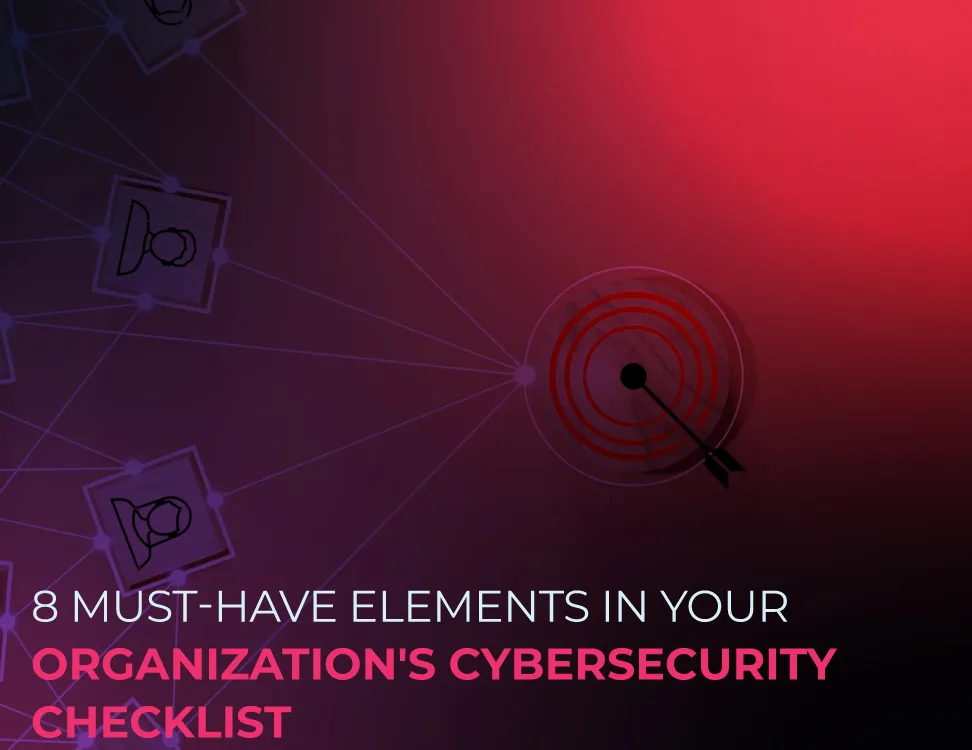
8 Must-Have Elements in Your Organization’s Cybersecurity Checklist
Safeguarding sensitive data and fortifying defenses against cyber threats is one of the determining aspects of any organization’s success. Establishing a robust cybersecurity checklist forms the cornerstone of a proactive defense strategy. Below, we have outlined essential elements that should be included in every organization’s cybersecurity checklist to improve resilience and protect against potential breaches.
The importance of cybersecurity for businesses
Cybersecurity stands as the fortress guarding today’s organization’s most valuable asset, Data. It preserves not only sensitive company information but also the trust of customers and partners. It is the shield that protects against financial losses, reputational damage, and operational disruptions caused by cyberattacks.
66% of CIOs say they plan to increase investment in cybersecurity.
WSJ
Beyond defense, a robust cybersecurity framework builds confidence among stakeholders, fostering innovation, growth, and resilience in an increasingly digitized economy. Businesses must recognize that investing in cybersecurity isn’t merely a choice—it’s an indispensable pillar safeguarding the present and securing the future in a tech-centric world.
Essential elements to include in your cyber security checklist
- Regular Security Audits and Assessments
Regular assessments and audits serve as the foundation for a strong cyber security posture. Organizations must conduct comprehensive evaluations of networks, systems, and applications to identify vulnerabilities and ensure compliance with security standards.
- Strong Access Controls and Identity Management
Implementing access controls, including strong authentication methods and role-based access, is essential to restricting the unauthorized handling of sensitive data.
- Updated Software and Patch Management
Security teams must maintain a vigilant approach to software updates and patches. Unpatched software is one of the most common entry points for cyber threats. Ensure a systematic approach to apply updates promptly, reducing the risk of exploitation through known vulnerabilities.
- Robust Endpoint Security Measures
Endpoint devices are often the targets of cyber attacks. Incorporate robust antivirus software, firewalls, and encryption mechanisms on all devices, including laptops, smartphones, and IoT devices, to fortify your defenses.
- Employee Training and Awareness Programs
Educating employees on cybersecurity best practices is critical. Regular training sessions to recognize phishing attempts, social engineering tactics, and the importance of strong passwords contribute significantly to overall security.
- Incident Response and Disaster Recovery Plans
Develop and regularly update comprehensive incident response and disaster recovery plans. These plans should outline step-by-step procedures to mitigate and recover from security incidents efficiently.
- Continuous Monitoring and Threat Detection
Implement continuous monitoring systems and robust threat detection mechanisms. These tools provide real-time insights into potential threats and unusual activities.
- Compliance with Regulatory Standards
Ensure adherence to industry-specific regulations and compliance standards. Compliance not only mitigates legal risks but also sets a benchmark for cybersecurity best practices.
More Topic
Want to learn how DataPatrol can help you prevent insider threats?
Explore our Solutions
DataPatrol provides organizations with out-of-the-box and user-friendly solutions to secure sensitive and confidential data from unauthorized disclosure.
Request a demo today!








